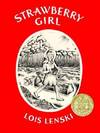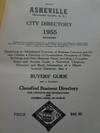
The height of the vector rods in the three-dimensional Patterson of haemoglobin in Acta Crystallographica, Volume 5, Part 3, May 1952, pp. 381-386
by Crick, F. H. C
- Used
- Paperback
- first
- Condition
- See description
- Seller
-
West Branch, Iowa, United States
Payment Methods Accepted
About This Item
Copenhagen: Ejnar Munksgaard Ltd, 1952. 1st Edition. FIRST EDITION IN ORIGINAL WRAPS OF THE PAPER IN WHICH FRANCIS CRICK DEMONSTRATES THAT THE THEN ACCEPTED PERUTZ MODEL OF HEMOGLOBIN OF LONG PARALLEL CHAINS CANNOT BE CORRECT.
"Max Perutz was one of the first crystallographers to attempt the deciphering of macrostructures... Perutz used the Patterson method for investigating the structure of haemoglobin. Perutz reasoned that if "the [haemo]globin molecule consisted of a complex interlocking system of coiled polypeptide chains where interatomic vectors occur with equal frequency in all possible directions, the Patterson synthesis would be unlikely to provide a clue to the structure" (Schindler, Model, Theory and Evidence in the Discovery of the DNA Structure, 11).
H. Perutz original interpretation of a molecule made up of alpha chains which run parallel to the X-axis was clearly much too simple. "Quantitative considerations led Crick [in this paper] to the conclusion that chains running parallel to X make up only part of the molecule. The actual folding of the chain now revealed is so complex that it could never have been solved on the basis of the three-dimensional Patterson" (Perutz, Unravelling the Atomic Mechanism of Haemoglobin, 220).
In the paper, "A method is described for calculating the average height of the vector rods in the three-dimensional Patterson of haemoglobin. The calculations have been carried out for the -helix. They show that the simple models previously considered for haemoglobin give peaks which are too high, and that to obtain even rough agreement either less than about half the protein must be put into chains parallel to the X axis or considerable irregularity must be introduced. The evidence suggests that the folded polypeptide chain does not run in one direction for more than 20 Å at a stretch" (Crick, The Height of the Vector Rods, Abstract, 5, 3, 1952, p.381). CONDITION & DETAILS: Copenhagen: Ejnar Munksgaard Ltd. First edition in original wraps. 4to. 10.25 by 7.5 inches (256 x 188mm). pp. 301-396. Meticulously re-backed at the spine with the original spine label. Pristine condition inside and out. Fine.
"Max Perutz was one of the first crystallographers to attempt the deciphering of macrostructures... Perutz used the Patterson method for investigating the structure of haemoglobin. Perutz reasoned that if "the [haemo]globin molecule consisted of a complex interlocking system of coiled polypeptide chains where interatomic vectors occur with equal frequency in all possible directions, the Patterson synthesis would be unlikely to provide a clue to the structure" (Schindler, Model, Theory and Evidence in the Discovery of the DNA Structure, 11).
H. Perutz original interpretation of a molecule made up of alpha chains which run parallel to the X-axis was clearly much too simple. "Quantitative considerations led Crick [in this paper] to the conclusion that chains running parallel to X make up only part of the molecule. The actual folding of the chain now revealed is so complex that it could never have been solved on the basis of the three-dimensional Patterson" (Perutz, Unravelling the Atomic Mechanism of Haemoglobin, 220).
In the paper, "A method is described for calculating the average height of the vector rods in the three-dimensional Patterson of haemoglobin. The calculations have been carried out for the -helix. They show that the simple models previously considered for haemoglobin give peaks which are too high, and that to obtain even rough agreement either less than about half the protein must be put into chains parallel to the X axis or considerable irregularity must be introduced. The evidence suggests that the folded polypeptide chain does not run in one direction for more than 20 Å at a stretch" (Crick, The Height of the Vector Rods, Abstract, 5, 3, 1952, p.381). CONDITION & DETAILS: Copenhagen: Ejnar Munksgaard Ltd. First edition in original wraps. 4to. 10.25 by 7.5 inches (256 x 188mm). pp. 301-396. Meticulously re-backed at the spine with the original spine label. Pristine condition inside and out. Fine.
Reviews
(Log in or Create an Account first!)
Details
- Bookseller
- Atticus Rare Books
(US)
- Bookseller's Inventory #
- 570
- Title
- The height of the vector rods in the three-dimensional Patterson of haemoglobin in Acta Crystallographica, Volume 5, Part 3, May 1952, pp. 381-386
- Author
- Crick, F. H. C
- Book Condition
- Used
- Quantity Available
- 1
- Edition
- 1st Edition
- Binding
- Paperback
- Publisher
- Ejnar Munksgaard Ltd
- Place of Publication
- Copenhagen
- Date Published
- 1952
Terms of Sale
Atticus Rare Books
30 day return guarantee, with full refund including shipping costs for up to 30 days after delivery if an item arrives misdescribed or damaged.
About the Seller
Atticus Rare Books
Biblio member since 2010
West Branch, Iowa
About Atticus Rare Books
We specialize in rare and unusual antiquarian books in the sciences and the history of science. Additionally, we specialize in 20th century physics, mathematics, and astronomy.
Glossary
Some terminology that may be used in this description includes:
- Re-backed
- Describes a book that has had the material covering the spine replaced or joints mended.
- Spine Label
- The paper or leather descriptive tag attached to the spine of the book, most commonly providing the title and author of the...
- Fine
- A book in fine condition exhibits no flaws. A fine condition book closely approaches As New condition, but may lack the...
- Spine
- The outer portion of a book which covers the actual binding. The spine usually faces outward when a book is placed on a shelf....
- First Edition
- In book collecting, the first edition is the earliest published form of a book. A book may have more than one first edition in...

